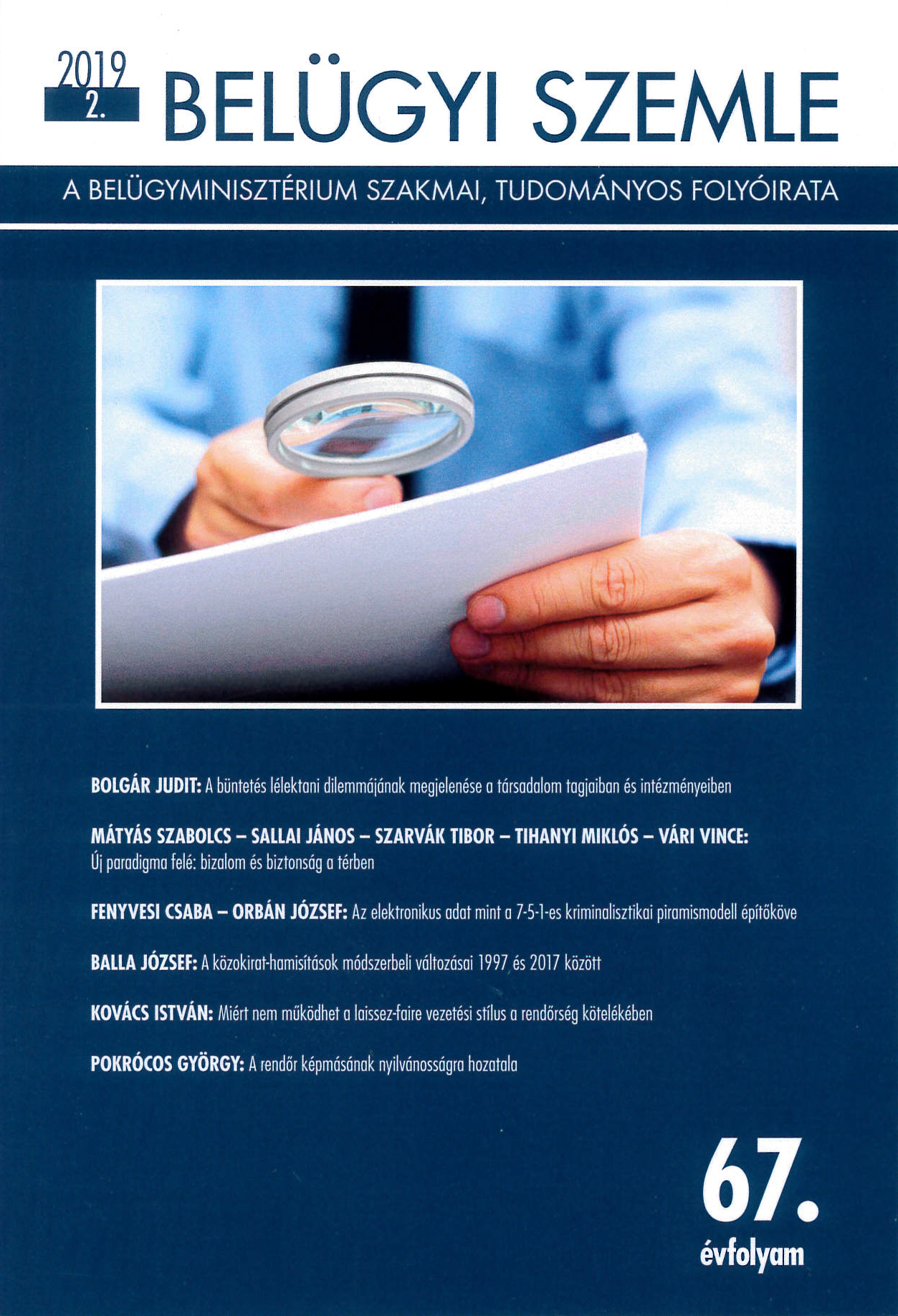Keywords
methodology of forgery
method
enviroment
method
enviroment
How to Cite
The transformation of the methodology of forgery between 1997 and 2017. (2019). Academic Journal of Internal Affairs, 67(2), 56-68. https://doi.org/10.38146/BSZ.2019.2.4
Abstract
The author provides an overview of how the technical and environment of forgery changed in the past two decades.
Downloads
Download data is not yet available.
Similar Articles
- Imre Dobák, Péter Bérczi, Crowdsourcing – opportunities and limitations from national security perspective , Academic Journal of Internal Affairs: Vol. 73 No. 3 (2025)
- Amadé Retek, Tamás Pressburger, Ronett Radvánszki, Nikiforosz Packosz, Olivér Tamás Csiki, International Law Enforcement Observer XVIII. , Academic Journal of Internal Affairs: Vol. 73 No. 7 (2025)
- Katalin Kondás, The identification of prisoners in the criminal justice system , Academic Journal of Internal Affairs: Vol. 71 No. 12 (2023)
- Csilla Paksi-Petró, Georgina Stréhli, Development with coaching approach in the civil service. Best practices and development potentials in law enforcement and public administration , Academic Journal of Internal Affairs: Vol. 69 No. 12 (2021)
- Zoltán Csizner, Controlled delivery – the history and new possibilities for the methods against illegal trafficking , Academic Journal of Internal Affairs: Vol. 69 No. 7 (2021)
- Árpád Budaházi, Limitations of Brain-based Lie Detection , Academic Journal of Internal Affairs: Vol. 70 No. 1. ksz. (2022): Special Issue
- István Ambrus, Zoltán Deák, Major issues in bank card-related crimes , Academic Journal of Internal Affairs: Vol. 59 No. 2 (2011)
- Ernő Krauzer, The teaching-methodological situation of police officer training , Academic Journal of Internal Affairs: Vol. 70 No. 12 (2022)
- Klaudia Lohner, Criminal profiling – trough researches to crime scene investigation , Academic Journal of Internal Affairs: Vol. 69 No. 12 (2021)
- Gábor Kemény, Hindering and supportive factors of cross-border information exchange , Academic Journal of Internal Affairs: Vol. 68 No. 2. ksz. (2020): Special Issue
You may also start an advanced similarity search for this article.
Most read articles by the same author(s)
- Ákos Erdős, József Balla, Non-intrusive Method for Detection of Irregular Migration and Human Smuggling: Practical Experience with the MMD01 Detector in Hungary , Academic Journal of Internal Affairs: Vol. 73 No. 8 (2025)
- József Balla, László Vájlok, Attila Vedó, 30 years of border police officer training - we don’t need soldiers , Academic Journal of Internal Affairs: Vol. 70 No. 10 (2022)
- Lénárd Zsákai, József Balla, Mónika Herczeg, László Vájlok, Attila Vedó, János Pető, Testing and evaluation of the Automated Border Control System , Academic Journal of Internal Affairs: Vol. 71 No. 2 (2023)
- József Balla, László Kui, Tamás Szele, Factors Influencing the Reintroduction of Border Control , Academic Journal of Internal Affairs: Vol. 67 No. 7-8 (2019)
- József Balla, László Vájlok, Between East and West. State borders, travel documents, border crossing in Hungary and in Czechoslovakia (1946-1989) , Academic Journal of Internal Affairs: Vol. 68 No. 7 (2020)

